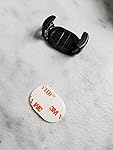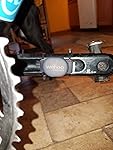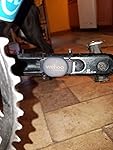








Ready to go? Add this product to your cart and select a plan during checkout. Payment plans are offered through our trusted finance partners Klarna, PayTomorrow, Affirm, Afterpay, Apple Pay, and PayPal. No-credit-needed leasing options through Acima may also be available at checkout.
Learn more about financing & leasing here.
This item is eligible for return within 30 days of receipt
To qualify for a full refund, items must be returned in their original, unused condition. If an item is returned in a used, damaged, or materially different state, you may be granted a partial refund.
To initiate a return, please visit our Returns Center.
View our full returns policy here.
Style: Speed and Cadence Sensor
Features
Brand: Wahoo Fitness
Item Dimensions LxWxH: 1.25 x 1 x 0.75 inches
Material: Metal
Item Weight: 0.01 Kilograms
Style: Speed and Cadence Sensor
Mounting Type: Flange Mount
Specific Uses For Product: Speed Sensor
Item Package Dimensions L x W x H: 13.5 x 4.69 x 1.34 inches
Package Weight: 0.09 Kilograms
Brand Name: Wahoo Fitness
Model Name: WFRPMC
Color: Black
Suggested Users: Unisex
Number of Items: 1
Manufacturer: Wahoo Fitness (Sports & Outdoors)
Part Number: WFRPMC
Model Year: 2016
Included Components: Wahoo RPM Speed and Cadence Sensor with batteries
Size: 1.25 Inch
Date First Available: April 15, 2016





